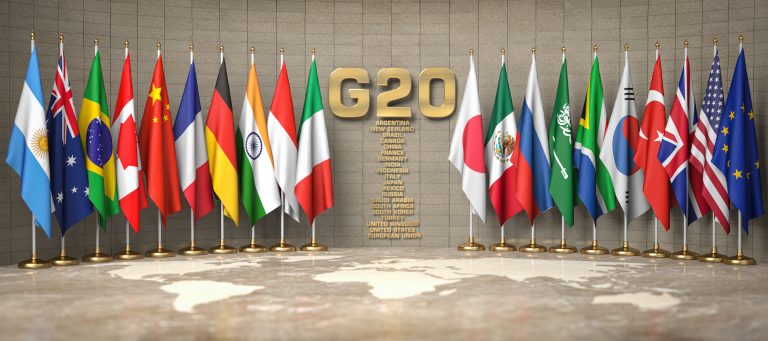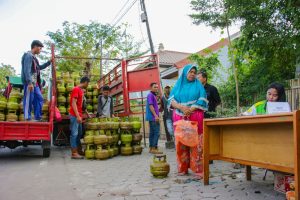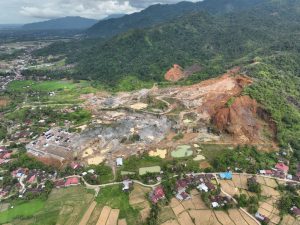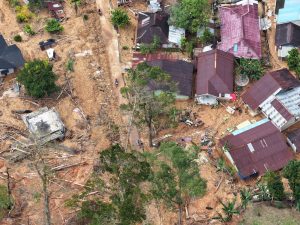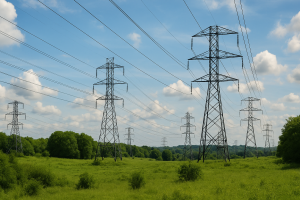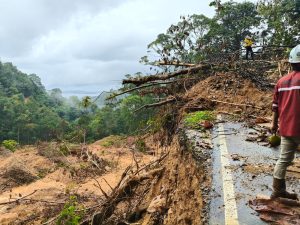by Fadiyah Alaidrus
Gearing up to take on the Group of Twenty (G20) presidency in 2022, Indonesia has set in motion a number of preparations. From the formation of a committee by President Joko Widodo mandated with a number of tasks, to cooperation with a number of universities.
Apart from all the technical preparations, all countries involved in the G20, including Indonesia, have a bigger responsibility than to carry out their commitments. The commitment was declared at the G20 meeting on November 21, 2020, in Riyadh, Saudi Arabia. Some of the points contained in the declaration relate to handling environmental problems, such as climate change, loss of biodiversity, to carrying out the obligations of each country as stated in the Paris Agreement. Indonesia has ratified the Paris Agreement in Law no. 16 of 2016.
One of the commitments of the Government of Indonesia is to reduce 29% of greenhouse gas (GHG) emissions by 2030 independently, divided between the forestry sector (17.2%), energy (11%), agriculture (0.32%), industry (0.10%) , and waste (0.38%). Indonesia is also the only country that has clearly stated that it does not want to increase its emission reduction target ambitions because it does not want to “compromise” the economy.
How has Indonesia been doing so far?
Indonesia is in the list of the top 10 CO2 emission contributors in the world in 2018. Indonesia has increased its GHG by 140% from 1990 to 2017. Based on an analysis from Climate Transparency, Indonesia’s cutting target is still very low and not in line with the global target to reduce temperatures by 1.5°C.
Since 2015, Indonesia has reduced its GHG emissions. The decline rate continues to increase until 2020. On the other hand, the existing decline has not been able to achieve the predetermined reduction target. Until 2020, Indonesia has only achieved a GHG emission reduction of 11.5%. Nevertheless, the government remains optimistic to achieve its target.
“All sectors must further increase the reduction of greenhouse gas emissions towards 2050. In addition, it is hoped that in 2050 climate resilience can be achieved through sectoral and regional channels,” explained the Minister of Environment and Forestry (LHK) Siti Nurbaya in March.
Based on data from the Ministry of Environment and Forestry, one of the sectors that contributes greatly to reducing GHG emissions is the forestry sector. The deforestation rate fell by 75.03 percent in 2019-2020, to 115.46 thousand ha. Meanwhile, in the 2018-2019 period, the deforestation rate reached 462.46 thousand ha.
“This 75% reduction in deforestation rates during the 2019/2020 period is evidence, not perception. This is the result of our hard work together so that the deforestation rate can be reduced to the lowest point in history,” said interim Forestry Planning and Environmental Management Director General Ruandha Agung Sugardiman.
The energy sector, as the sector that contributes the highest GHG emissions in Indonesia, has also succeeded in reducing the number. The energy sector and the land sector account for at least more than 90% of the total emissions in Indonesia. The majority of energy in Indonesia itself still comes from oil and coal.
Minister of Energy and Mineral Resources (ESDM), Arifin Tasrif, who is also the Daily Chair of the National Energy Council (DEN), said that Indonesia remains ambitious to achieve the target of reducing emissions from the energy sector.
“Currently, with regards to emission reduction targets, Indonesia needs to anticipate and encourage the use of new renewable energy sources in our national energy mix to reduce emissions,” said Tasrif.
He also said that Indonesia has had a number of policy developments in order to support green projects and renewable energy. One of the plans being prepared is a shift from coal-powered plants to cleaner plants.
“Indonesia is also actively being responsive and inclusive in developing low-carbon development policies and climate resilience while also recovering the economy from the effects of the global pandemic,” he said.
Contradictory Policies
In ICEL’s Note Commemorating 5 Years After the Paris Agreement: A Brief Reflection on Indonesia’s Climate Change Policy Direction, Indonesia has indeed issued a number of policies to reduce GHG emissions. In the forestry sector, one of the good practices carried out is establishing the Peatlands and Mangrove Restoration Agency (BRGM) which is tasked with coordinating and facilitating peat restoration in 2016.
There was also the issuance of Ministerial Regulation No. P.83/2016 concerning Social Forestry. The goal is to provide the community access to forest management. The President also issued a Palm Oil Moratorium which is the delay of the issuance of new oil palm plantation permits, as well as mandated the evaluation of existing palm oil company permits.
“While efforts in the energy sector are not too ambitious and most inconsistencies are in efforts to contribute to the implementation of NDCs,” the ICEL report noted.
On the other hand, the Government and the Indonesian House of Representatives (DPR) have also issued a number of regulations over the past few years which have received a lot of criticism because of their negative impact on the environment. Some of the regulations include the revision of the Minerba Law and the Omnibus Law which were rejected in the largest civil society action in the last 20 years in Indonesia.
The Omnibus Law is one of the regulations issued to facilitate licensing and increase investment in Indonesia. There are several points in Law no. 32 of 2009 concerning environmental protection and management which was removed in the Omnibus Law, including environmental impact analysis (EIA) which is currently required only for high-potential projects. The community will also no longer be able to file an objection if an EIA is issued.
Greenpeace believes that the Omnibus Law that was finally passed in 2020 will actually exacerbate the existing climate crisis. The Omnibus Law will provide convenience for coal companies, they said.
“It will be very difficult for Indonesia to fulfill its commitments to the Paris Agreement. Not to mention calculating that these investments are followed by economic, social, and land conflicts with the surrounding communities,” said Jasmine Puteri, Greenpeace Indonesia Forest Campaigner.
The mineral and coal (minerba) law was also passed in 2020. The Minerba Law changed several rules, including transferring the authority to grant mining permits to the central government, to guaranteeing the extension of mining permits without evaluation.
“With a number of policies currently in place, emissions are expected to continue to rise until 2030,” the 2020 Climate Transparency Report reports in its section on Indonesia.

